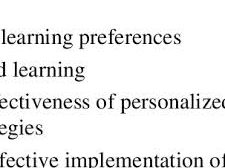In the journey of finding a life partner, a well-crafted biodata can be your ultimate wingman. It’s your opportunity to make a lasting first impression and pave the way for a meaningful connection. So, let’s dive into the art of creating a biodata for marriage that truly reflects who you are and what you’re looking for in a partner.
Understanding the Purpose
Before you start penning down your biodata, it’s crucial to understand its purpose. Your biodata is more than just a document; it’s a glimpse into your personality, values, and aspirations. Its primary goal is to help you connect with potential life partners who share your vision for the future.
Structuring Your Biodata
A well-structured biodata is easy to read and provides essential information about you. Here’s a suggested format:
- Personal Information: Begin with your name, age, date of birth, and contact details. Include a recent photograph that presents you in a genuine and approachable light.
- About Me: This section is your chance to introduce yourself. Share your hobbies, interests, and passions. Mention your educational background and career briefly.
- Family Details: Provide an overview of your family, including the names and professions of your parents and siblings. Mention any important family values or traditions.
- Partner Preferences: Be clear about what you’re looking for in a life partner. Mention qualities, values, and expectations that are important to you. This helps potential matches understand your compatibility.
- Hobbies and Interests: Go into more detail about your hobbies and interests. Highlight any activities or causes that are particularly meaningful to you.
- Career and Ambitions: Discuss your career goals and ambitions. Mention your current job and any long-term plans you have for your professional life.
- Personal Values: Share your personal values and beliefs. This can include your religious or spiritual beliefs, ethical principles, and life philosophy.
- Achievements: If you have any notable achievements, awards, or certifications, don’t be shy to mention them. This can showcase your dedication and talents.
Dos and Don’ts
- Do Be Honest: Honesty is key. Be truthful about your personal and family details, and be transparent about your expectations.
- Do Highlight Positivity: Use positive language throughout your biodata. Focus on your strengths and what you bring to a relationship.
- Don’t Overshare: While it’s essential to provide meaningful information, avoid oversharing personal or sensitive details.
- Don’t Be Superficial: Avoid listing preferences that are overly specific or shallow. Instead, focus on core values and qualities.
- Do Proofread: Ensure that your biodata is free of grammatical errors and typos. A well-written biodata reflects attention to detail.
Conclusion
Your biodata for marriage is your introduction to potential life partners. It’s a tool to help you find someone who shares your vision and values. Craft it with care, and remember that authenticity and clarity are your best allies in this journey. With a well-structured biodata, you’re one step closer to finding the love and companionship you desire.



